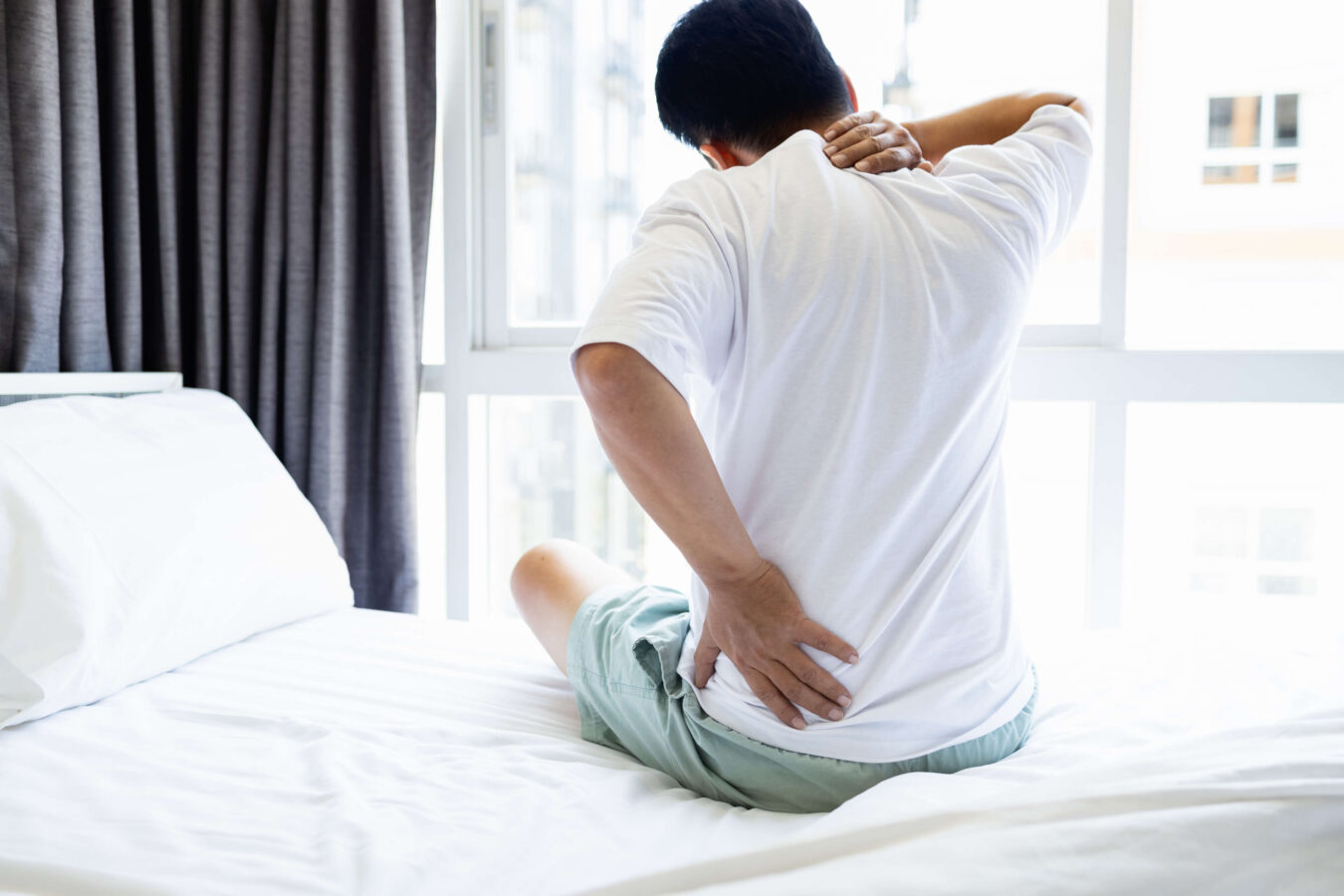
Medically reviewed by Misty Seidenburg
Differences in the length and strength of opposing muscle groups can affect movement and mobility, and increase the risk of musculoskeletal injuries and disability. These differences can be inherited or occur from inactivity, posture problems, and overtraining. Learn how to fix muscle imbalances with physical therapy and lifestyle changes to restore balanced movement.
Balance is essential in all aspects of life—including the human body. Our joints are surrounded and supported by muscles that facilitate motion. These muscle groups counterbalance each other to perform movement. For proper, balanced movement, muscles on both sides of our bones and joints must be equal in length, strength, and flexibility. Differences between them cause muscle imbalance.
Right-to-left asymmetry is an imbalance that affects muscles on both sides of the body. For example, your left quadricep may be larger and stronger than your right quadricep muscle. Asymmetry can also occur between the upper and lower halves of the body.
Imbalances between opposing muscle groups affect muscles that work in opposite directions to produce movement. This type of asymmetry often involves the biceps, triceps, quadriceps, hips, hamstrings, and calves. It’s important to note that muscle asymmetry is normal and common. Asymmetries become problematic if they affect mobility or function or cause pain.
Some people are born with a genetic predisposition to muscle asymmetry or have a health condition that causes imbalance. In other cases, these differences are attributed to lifestyle habits, including how we sit, stand, and exercise every day. Here are the common causes of muscle imbalance.
Moving the same muscles for work, fitness, and everyday tasks is one of the most common causes of muscle imbalance. Repeating the same movement for extended periods causes certain muscles to remain semi-contracted, throwing surrounding or opposing muscles out of balance.
Prolonged periods of inactivity can cause muscles to shorten, lose mass, and weaken. If you have a sedentary lifestyle and spend a lot of time sitting at home, in the office, or the car, you are more likely to have an imbalance in the glutes, back, hip flexors, and hamstrings.
After an injury, the body can compensate for deficiencies by putting more weight on the opposing muscles. Over time, these compensating muscles work harder to support the body, causing them to become larger and stronger than those on the injured side.
Poor posture is both a sign of muscle asymmetry and a cause. Slouching, slumping, and other poor postures overstretch and cause tension in specific muscles while tightening and shortening others. Sitting at a desk for hours while slouching shortens the abdominal muscles and lengthens the back muscles, creating the rounded back appearance known as “tech neck.”
The type of footwear you wear can also cause muscle imbalance. High heels, wedges, and other shoes that elevate the heels higher than the toes alter the position of your knees, throwing off the natural balance of the hip and leg muscles.
Minor muscle imbalances are widespread, and most people find they have a weaker or stronger side. However, more significant discrepancies between muscle groups can affect a person’s daily routines, restricting mobility and possibly leading to pain.
For this reason, it’s important to address signs of muscle imbalance early before they progress and become more pronounced. Common signs of muscle imbalance include:
If you have these symptoms, think about the tasks you do on an average day. If you use one side or muscle group more than its counterpart for your job, hobbies, or daily activities, muscle imbalance may be causing your pain and movement issues.
Muscle asymmetry does not happen overnight, so improving it will take time. Physical therapy is a great place to start. As movement experts, physical therapists use their advanced knowledge and training to identify and fix these subtle imbalances.
Treatment begins with a functional evaluation, during which the physical therapist assesses posture, muscle length, and muscle strength. This helps determine which muscles are too weak, tight, or short.
Physical therapists work with clients to strengthen weak areas through strength and endurance training. An exercise program that includes multi-directional movements helps clients expand beyond single-plane exercises to develop all muscle groups equally throughout the body.
Balance and coordination training disrupts the cycle of imbalance and restores health movement and posture. Stretching, myofascial release, and other manual therapies help release and lengthen tight tissues. Physical therapists also teach proper body mechanics to maintain good posture, avoid imbalance, and prevent injuries.
A physical therapy treatment plan for muscle imbalance can transform how you feel, move, and function throughout your day. Find a physical therapy clinic near you or request an appointment online to get started.